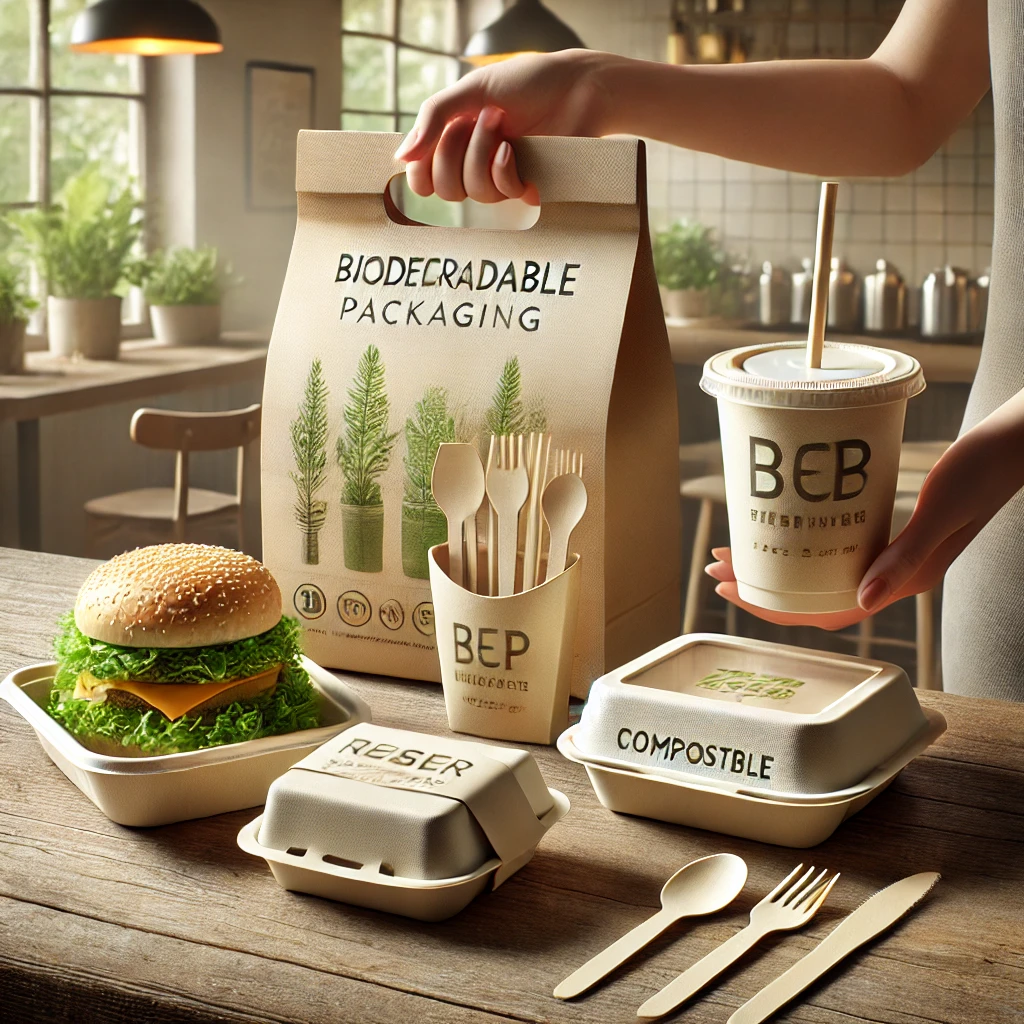The restaurant industry is undergoing a much-needed transformation toward sustainability, and one of the most significant changes is the shift toward biodegradable packaging. With increasing consumer awareness and regulatory pressure, restaurants are recognizing the urgent need to replace traditional plastic and Styrofoam containers with eco-friendly alternatives. But what exactly is biodegradable packaging, and why does it matter?
Understanding Biodegradable Packaging
Biodegradable packaging is designed to break down naturally into non-toxic components, such as water, carbon dioxide, and biomass, under the right environmental conditions. Unlike plastic, which can take hundreds of years to decompose, biodegradable materials decompose within months, significantly reducing their environmental impact. These materials can be derived from plant-based sources like cornstarch, sugarcane, bamboo, or even seaweed.
Why Restaurants Should Embrace Biodegradable Packaging
-
Environmental Benefits – The primary advantage of biodegradable packaging is its ability to reduce pollution and waste in landfills and oceans. Unlike traditional plastic, which contributes to environmental degradation, biodegradable materials break down naturally and reduce the carbon footprint.
-
Consumer Demand for Sustainability – Today’s consumers are more eco-conscious than ever. Studies show that diners are willing to support businesses that align with their environmental values. By adopting biodegradable packaging, restaurants can attract environmentally conscious customers and enhance their brand image.
-
Compliance with Regulations – Many governments and municipalities are implementing bans and restrictions on single-use plastics. By transitioning to biodegradable options, restaurants can stay ahead of regulations and avoid potential fines or legal issues.
-
Improved Food Safety – Some plastic packaging contains harmful chemicals that can leach into food, posing health risks. Biodegradable alternatives made from natural materials are often safer and free from toxins like BPA and phthalates.
-
Competitive Advantage – Being an early adopter of biodegradable packaging can set a restaurant apart from competitors. Highlighting sustainability efforts in marketing campaigns can attract a loyal customer base that values eco-friendly practices.
Types of Biodegradable Packaging for Restaurants
Restaurants have a variety of biodegradable packaging options to choose from, including:
-
Compostable Containers – Made from materials like bagasse (sugarcane pulp) and PLA (polylactic acid), these containers decompose efficiently in composting facilities.
-
Edible Packaging – Innovative solutions such as seaweed-based wrappers and rice paper offer an eco-friendly and edible alternative to traditional containers.
-
Biodegradable Utensils and Straws – Restaurants can replace plastic utensils and straws with compostable versions made from cornstarch, bamboo, or wood.
-
Recyclable and Reusable Options – While not strictly biodegradable, some materials like glass and aluminum are sustainable alternatives that minimize waste.
Challenges in Implementing Biodegradable Packaging
While biodegradable packaging offers numerous benefits, restaurants may face challenges such as:
-
Higher Costs – Biodegradable materials can be more expensive than traditional plastic. However, costs are gradually decreasing as demand grows and production scales up.
-
Proper Disposal Infrastructure – Not all areas have industrial composting facilities, which means biodegradable packaging may still end up in landfills if not disposed of correctly.
-
Durability Concerns – Some biodegradable materials may not be as durable as plastic, making them less suitable for certain types of food packaging.
The Path Forward
To make the transition to biodegradable packaging successful, restaurants can:
-
Partner with sustainable packaging suppliers to find cost-effective solutions.
-
Educate customers on proper disposal methods to maximize environmental benefits.
-
Advocate for better composting infrastructure to ensure biodegradable materials decompose as intended.
-
Incorporate sustainability into their brand messaging to engage and inspire consumers.
Conclusion
The shift to biodegradable packaging is more than just a trend—it’s a necessary step toward a sustainable future in the restaurant industry. By making eco-friendly choices, restaurants can reduce their environmental impact, meet consumer demand, and contribute to a healthier planet. The time to act is now—sustainability isn’t just good for business, it’s essential for the future of dining.

